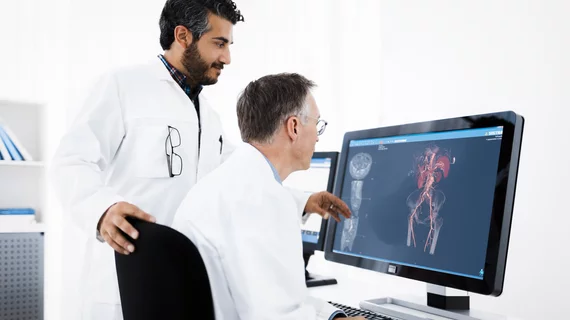How the 2015 Amtrak derailment impacted care, improved workflow at Temple University Health System
Emergency radiology researchers from the Temple University Health System, described their experiences during the 2015 Amtrak Northeast Regional train derailment that occurred in Philadelphia. They assessed and outlined their response to the incident and published their findings in the Journal of the American College of Radiology.
The researchers, led by Anup K. Bhattacharya, MD, of Scripps Mercy Hospital in San Diego, noted that overall, they were encouraged by the response of the emergency radiology department; however, they found areas in which to improve.
“Although we are encouraged by the strength of our response, there are areas for further optimization and improvement, including improved communication between radiologists and technologists, automatic shifting of technologists from nonurgent cases, increased availability of attending radiologists and residents, PACS–electronic health record integration, and a radiology-specific mass casualty action plan,” Bhattacharya and colleagues wrote.
Comprising both Temple University Hospital and Episcopal Hospital in Philadelphia, the system ordered 308 CT scans and radiographs for a total of 55 patients within 12 hours of arrival to the hospital emergency departments on May 12-13, 2018.
The researchers retrospectively viewed their PACS and electronic medical records (EMRs) to determine imaging turnaround times (TAT). They compared those statistics with emergency radiology department operations for the same 12-hour period during the preceding year. They found:
- Fractures, involving the thorax, lower extremity, upper extremity, vertebral column and head were the most common type of injury.
- Additional injuries include: visceral injuries, soft-tissue injuries, radiopaque foreign bodies, vascular injuries, posterior sternoclavicular dislocation and mesenteric injuries.
- There were no “significant” differences in the time between the arrival of the patient to the beginning of the imaging exam during the studied period (26 mins.), compared to the same time during the preceding year (28 mins.).
- Exam completion TATs “significantly” increased during the study period (35 mins.), compared to the same time during the preceding year (10 mins.).
- The time from viewing the examination by the radiologist to the exam being marked as read decreased (17 mins.), compared to the same time during the preceding year (248 mins.).
“Our analysis demonstrated that although the derailment caused delays in median TAT for beginning to completion of radiological examinations as well as completion to viewing of examinations by a radiologist, the Temple University Health System emergency radiology response compensated for these delays by providing clinically meaningful reductions in time from viewing examinations to dictating them and from reading examinations to having finalized reports,” wrote Bhattacharya et al.
The reasons for this are two-fold, the authors explained. The first is that all 55 patients came in three separate “waves,” about an hour apart—so it was easier for the department to manage the exams. Secondly, their emergency department was “prepared to amplify” the response to such an unpredictable incident.
There was an increase in time between viewing of the exams and the completion of imaging—thus an increase in TAT, the authors noted. They noted a large number of studies were overwhelming to the radiologists. The on-call radiologists were also in “active discussions” with the trauma team. Additionally, the team also had electronic paperwork—or memos—to read, which provided clinically-relevant and actionable information, though they resulted in delayed dictation and final sign-off on reports.
“Despite these delays, there was a concerted effort by the Department of Radiology across Temple University Health System to provide reads on studies as soon as reasonably possible,” the authors wrote. “This was illustrated by the fact that overall, there was a significant decrease in TAT from patient arrival to the availability of the finalized reports to clinicians, across all modalities.”
Following the Amtrak derailment incident, the emergency radiology department implemented changes to improve workflow during a mass casualty event including 24/7 radiologist coverage, an active call system for all subspecialties, a better EMR system for improved efficiency and implementation of backup technologists on call, among other improvements.
“With the appropriate improvements and recommendations in place, our institution, as well as many other urban level 1 trauma centers, can improve preparation for future such events,” Bhattacharya and colleagues concluded.

